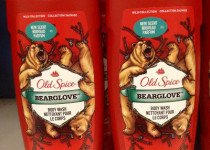You’re just about to fall asleep when it hits you. You grab a pen and note pad because you have to plan out every little detail right then and there. Sleep is not an option. You must write out the genius ideas that are budding inside you. You are going to create the greatest company the world has ever seen. Your brand is going to connect with others in a way that no other brand ever has.
Fast forward several years. You’re sitting at your desk looking at this month’s numbers, which over the last several months had been stagnant, but are now actually depleting. You’ve become so busy trying to carry a business that stress has removed any last remnants of excitement. Your competitors are gaining momentum. What are you going to do to fix it? How are you going to bring your brand back to life?
You’re going to upgrade your brand identity. You are going to rebrand your company and reconnect with your customers before you lose anymore of them. It won’t be quick and easy, but it will be worth it.
You’re scared of the costs, and that’s understandable. When your company starts to go downhill the last thing you want to do is spend money. You don’t know if rebranding will save your company or put you even further in the hole. That’s why I’m going to help ease some of that fear by telling you exactly what steps you need to take to ensure you rebrand the right way. Who better to guide us along this rebranding journey than the hilarious guys at Old Spice.

What Brand Identity Should Mean to You
The brand identity is the style and framework of your business that reflects the values of your company or how you want your company to be perceived. Alina Wheeler more eloquently states,
“Brand is the promise, the big idea, the expectations that reside in each customer’s mind about a product, service or company. Branding is about making an emotional connection”.
Your brand identity is the way people talk about your company amongst their friends. No one wants to be the brand that people question, or worse yet, the brand that no one is talking about. If there’s a chance people aren’t saying the best things about your company behind your back, it could be time for a brand upgrade.
Let’s think back on what Old Spice used to be. Back in 1938 Old Spice was the ultimate gentlemen’s grooming brand. I clearly remember my dad and grandpa both having that familiar scent. However, being identified as your grandpa’s brand isn’t exactly the best way to attract new customers.
Perhaps this is where your company is running into problems. The characteristics that gained your brand popularity back in the day, are no longer appealing to the newer generation.
Here are the steps we will take to make this rebranding a success:
-Diving deep into your buyer personas and finding your new target audience
-Creating culture and customer service initiatives that make everyone happy
-Honing in on your brand’s personality to convey a better message
-Updating your image to reflect the times
-A website redesign to connect to your online audience
-Creating a story that connects your customers to your new brand
Research Your Audience and Your Competition
Begin with your audience. What is your relationship with your audience right now? Are you besties or have you lost touch over the years only to pop in for the occasional Facebook post? If the latter, then why have you faded apart? Ask yourself these questions:
- What kind of impact does my business have on my customer’s daily life?
- Am I doing everything I can to produce the best product or service I can?
- Am I targeting the right audience or am I going too broad?
You probably already do research and check in on the competition frequently, but sometimes when business hits a lull, it’s a good idea to switch things up. Instead of relying on what others are saying about your field, try investigating it yourself. Set up polls on your social media to find out what your customers specifically want.
Old Spice released body wash for men in 2003, but competition caught up quickly. By 2006 Old Spice was sinking, and advertising agency Wieden and Kennedy came to the rescue.
“A big question for us at the time was the name and whether the brand could be relevant to young men moving forward. An early and key decision was to turn this perceived weakness into a strength. With its 70-year brand heritage Old Spice was ‘experienced’ and well positioned to be an expert on masculinity and being a man.” -Jess Monsey, W+K Account Director
Another reason why doing thorough research is so important is because their team also uncovered that more than 50% of body wash purchases are made by women. Had Old Spice not done their research, they may have never come up with the campaigns that both men and women know and love today.
Don’t Assume You Know Everything About Your Company
If you’re a senior leader, you may think you know everything there is to know about your business. However, a shocking study by Brand Workz revealed that “67 percent of marketers feel that despite the perceived organizational commitment to brand, senior leaders don’t fully understand its strategic role, value, or potential”.
Don’t be afraid to ask your entire team how they perceive your brand; one person’s insights could change everything.
Go Inbound and Don’t Cut Corners
Has your company already moved into the new age of inbound marketing? If not, that could be the number one reason you’ve started to notice a loss of business. Technology has moved the power from the sales and marketing teams, directly to the consumer. One way to solve this shift is to use content marketing and social media to help your customers find you.
Perhaps you’ve already gone inbound but you’ve drifted away from some of the core elements of the inbound strategy. If it’s been some time since you’ve updated your buyer personas, now would be a great time to get back to the drawing board. Hubspot has mastered the art of creating buyer personas, and this guide should help you get started. Once you’ve created your buyer personas then you can start building content geared towards that audience. Need a little guidance on how your content should look? Be sure to read 6 Pieces of Dating Advice for Developing Better Content and keep your consumers wanting more.
If the same research is producing the same numbers, that means it’s time to try a different approach. That might require some investigation or interviewing your previous clients/customers to get some valuable feedback. The goal is to find out what your business’ strengths and weaknesses are.
While you’re at it, you should also make a list of the strengths and weaknesses of your competitors. What are they doing better than you, and how can you improve your business to be better than theirs?
When you notice that other companies are succeeding by thinking outside of your industry’s little box, you need to jump outside the box as well and start getting creative with your new brand identity.
If it comes down to the simple fact that they have more money, then focus on what you can offer your customers without having to spend thousands on advertising.
Customers and Employees Above All Else
One way to drastically improve business is by improving your customer service department. If customer care isn’t your company’s number one priority, you’re doing it wrong. Go out and make your entire team read Tony Hsieh’s (CEO of Zappos) book Delivering Happiness to see how Hseih created one of the most successful companies in the world. I don’t mean to ruin the story for you, but his secret was unbeatable customer care and an internal culture anyone would be proud to be a part of.
Having the absolute best customer service doesn’t break the bank and it’s always a great way to beat out the competitors, considering just how disappointing customer service statistics are currently are.
You should also consider the culture of your company. People that love their job are more likely to work harder and promote their business.
“Culture isn’t part of the game, it is the game.”-Lou Gerstner, IBM
The same study by Brand Workz also showed a great disconnect between the values a company has internally as a culture, compared to the external brand identity that consumers see, “Only 53 percent of those we asked claimed an internal-external brand alignment in their workplace”.
If your brand identity toward your consumers is meant to be caring and creative, but your internal culture is closed-off and lacks employee appreciation, you’re going to run into huge problems. Happy workers are hard workers. People that feel that they have a voice in their company, that they have room to grow and that they are being rewarded for their efforts are going to care about the success of the company and do their best to help it grow.
Finding a Specific Identity for Your Brand
Once you’ve established what your customers want from your company, it’s time to go inward and evaluate your company’s personality traits. Some companies switch up the personality of the business too often, trying to be a one-size-fits-all kind of business. Not having a clear personality for your business can make it appear schizophrenic, which will confuse and lose customers. Evaluate the data from your customer research to narrow down your company’s character.
When Old Spice decided to market to a younger audience, they aimed for a brand personality that had a strong enough attitude to fit with its original traits, but was also funny and confident enough to reach a new, younger audience. “Swagger” became the well known personality characteristic of Old Spice. Their brand now had a personality that every guy wanted to be like, and that every woman wanted her man to be.

Narrow down your new brand personality traits and make it simple. Is your business fun or serious? Are you hip or classic? Don’t try to be everything at once, find the traits that fit your target audience and create a brand identity based on those characteristics.
The Image of Your Brand Identity
If you know you have a strong product or service and a dazzling brand personality, than looks could be your problem. Your logo, typeface, color scheme, or website could be outdated and losing you money.
The logo is a big part of brand identity; it’s the icon that symbolizes the face of the brand. Logos need to stay connected with people over time, which means you may need to occasionally upgrade the style of your logo in order to fit in with current trends.
For example, flat, sans-serif images and fonts became a trend in the past few years. Companies like Google, Logitech and Spotify all jumped on this logo trend to fit with the times.

That’s not to say your logo needs to look just like everyone else’s, but if the trend is to go less detailed, then experiment with ways to make your logo more simplistic. If the trend leans toward something more modern and dimensional, try something like a metallic 3D style to give your logo some depth.
![]()
With the growth of mobile usage, logos need to be responsive and adapt to the changes of modern technology. By cutting down your logo to its simplest form, you allow the integrity of your logo to carry over onto multiple devices like tablets, smartphones and wearables.

Color schemes can also play a big role in how your customers respond to your brand. Certain colors can carry personality traits, like dependable blue, exciting red or friendly yellow.
If you don’t want to change the entire color scheme, consider changing up the tints or shades of your current palette to give your logo a new look.
 Old Spice started out with a white background, red lettering and a very detailed blue sail boat. When they rebranded their image they went with the more powerful red as their primary background color that would grab attention. They also simplified the sailboat logo and font. Their newest products showcase artwork that reflects the scent of the product, like Bearglove and Timber.
Old Spice started out with a white background, red lettering and a very detailed blue sail boat. When they rebranded their image they went with the more powerful red as their primary background color that would grab attention. They also simplified the sailboat logo and font. Their newest products showcase artwork that reflects the scent of the product, like Bearglove and Timber.
Helpscout wrote a great article that includes studies about the truths and misconceptions of colors in branding. These studies may help you to find a color scheme that properly reflects your brand’s personality.
Your Website is the Face of Your Company
The world as we know it would probably implode without the internet. Your website isn’t just a side note anymore, your website is meant to encompass your entire brand identity for the world to see. Upgrading your website is too much information to fit into this article, so there will be a follow up on upgrading your website. For now, here are some main points to consider when upgrading your website:
- Make it SEO friendly by updating the content.
- Chose a modern design template instead of trying to squeeze outdated images and tiny text above the fold of your homepage.
- Make your website user friendly. Visitors won’t come back to your site if it isn’t attractive and easy to navigate through.
If your website hasn’t been updated in the last 6 years, then it’s probably not fully optimized for search result rankings, which means that no one is finding you in search engines. The SEO game is one of the most competitive sectors of marketing; everyone wants to be on the first page of search results.
Everything from the content you put on your site, down to the functionality and design need to look and feel modern if you want to stand a chance against your competitors.
Your website is also the face of your company, so you should want it to look up-to-date and appealing to your visitors. Look for inspiration from some of the top designed websites on the internet right now to find ideas on how you can change the look of your website to fit your brand upgrade.
Use Your Brand to Tell a Story
Now that you have researched your buyer personas, improved your customer services initiatives, identified your personality, and upgraded the physical characteristics of your brand, it’s time for you to take these elements to your marketing team to create a story for your newly upgraded identity. Your brand’s story isn’t a story about your company, it’s the story of how your brand plays a part in people’s daily lives.
If you look at some of the top St Patrick’s Day campaigns, you’ll see that even though they revolve around a holiday, they each take on a certain story to connect with their audience.
- Do you have a fun brand that aims to make people smile? Try to connect with your audience through humor.
- Is your brand sophisticated? Then connect with a high-end attitude by informing your audience of your high quality products or services.
- Are you a reliable brand that people can trust? Try a campaign story that connects with your audience on a deeper, more emotional level to build that trust.
- Is your new brand identity one that is meant to push others toward greatness? Then create a story that is captivating and inspirational.
Make sure you focus on the research you’ve done and stick to a campaign with a story that truly reflects your brand’s identity.
The following video is a compilation of the top commercials Old Spice came out with to tell their new story. Each story sticks to the personality of being a confident man’s man with a hilarious tone. Many of the ads also address ladies directly, insinuating that a man who uses Old Spice is the type of man she want to be with.
The final challenge will be to make sure that your entire team knows exactly what your brand identity is. Be consistent with your teammates and customers so that your new brand identity is clear to everyone involved. Don’t let the spark die. Have fun rebranding and find the inspiration to bring your brand back again. Rekindle the connection with your consumers by upgrading your brand and proving to them you are here for the long run.
[17-SEO-Myths]
Photo By: Mike Mozart
